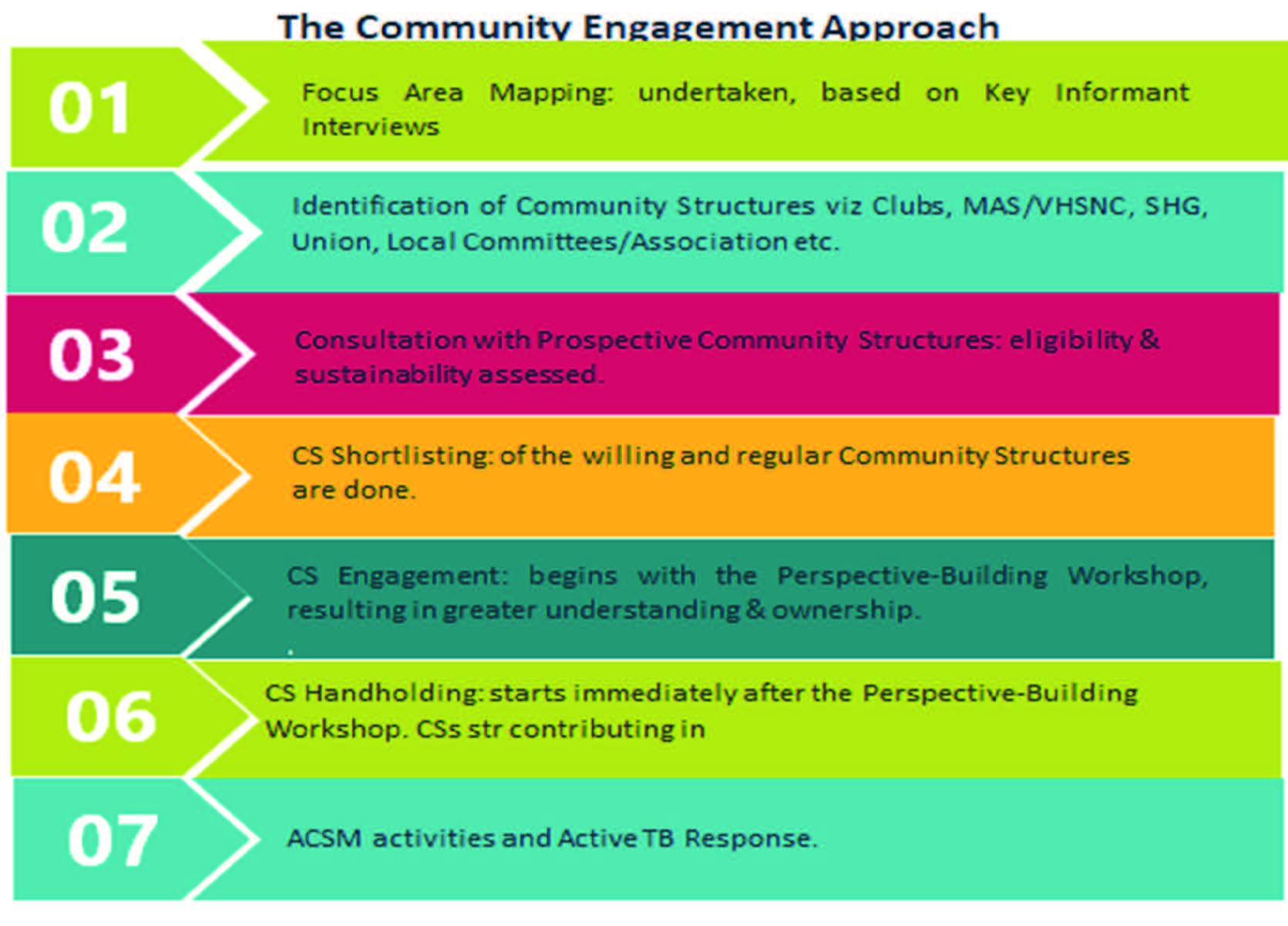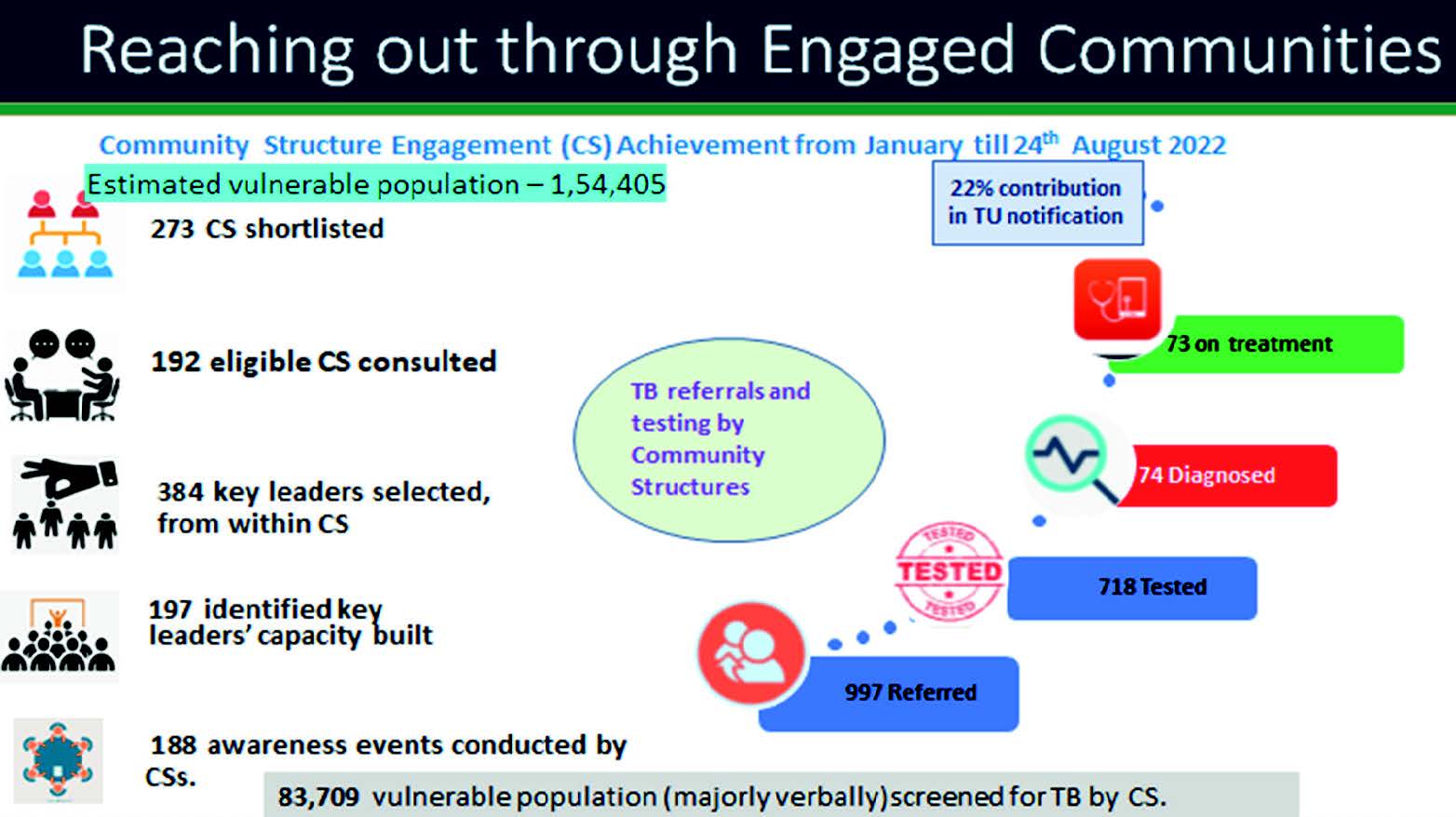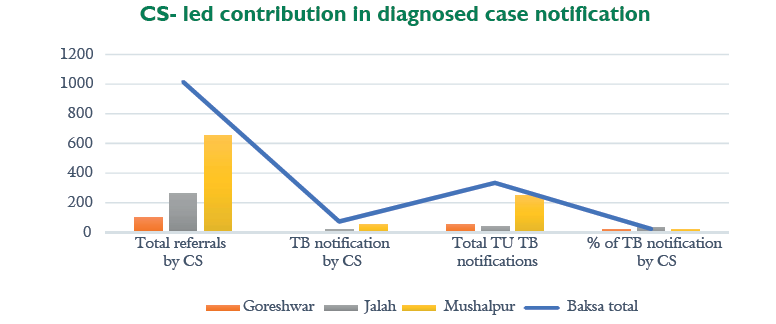Women-led Community Structures supporting ACSM and Active Case Finding
Women-led Community Structures supporting ACSM and Active Case Finding
Introduction & Rationale
To support the vision of ending TB by 2025, certain innovative and effective behaviour change operational models were developed to improve the coverage of specific vulnerable populations, especially the tribal communities from 3 Tuberculosis Units (TUs) of Goreshwar, Jalah and Mushalpur in Baksa district for increased case detection, notification, and improved successful treatment outcomes in drug sensitive TB (DS TB) and drug-resistant TB (DR TB). A socio-behavioural approach has been adopted in engaging the vulnerable communities to lead the TB response in their respective areas. This contributes directly to improved active case finding and better treatment outcomes through greater demand generation of TB related services – mostly owned by the communities.
Objectives
- Develop and scale up effective behaviour change operational models that improve coverage of vulnerable populations (1,54,405) across the 3 TUs of Jalah, Goreshwar and Mushalpur
- Increased case notification and improved successful treatment outcomes in DS TB and DR TB
Overall Approach & key Strategies

Existing Community Structures (CS) such as Self Help Group (SHGs), Village Health Sanitation and Nutrition Committees (VHSNCs), Village Defence Party (VDP), Unions, Mothers/Youth Clubs, and other local associations from the vulnerable communities are identified, trained and engaged in TB response activities. The selected leaders are capacitated on TB responses, followed by regular handholding and guidance on conducting various activities in support of TB Elimination, leading to ownership by the communities.
The key strategies through CS are:
- Engagement with the Village Council and Development Committee (VCDC), equivalent to Panchayati Raj Institution. Non-medical support has started coming in from the VCDC chairpersons to the most-needy population.
- Engagement with the Community Health Officers (CHOs), eventually strengthening the referral pathway.
- Engagement with the TB Champions (TBCs) in meetings and other activities.
- Engagement of NTEP functionaries in CS-led activities.
- Emergence of CS Leaders as Peer Educators in perspective-building workshops.
Implementation
The geography included Goreshwar, Jalah and Mushalpur blocks in Baksa districts covering a total vulnerable population of 1,54,405 under the Breaking the Barriers project implemented by KHPT and supported by USAID . This implementation began in January 2022 and will continue until March 2024.
The Key Activities Include:

- Promoting positive messaging and awareness on TB in communities
- Referring TB symptomatic persons for testing
- Supporting DSTB & DRTB notification
- Mobilizing support for persons with TB and families (nutrition, counselling, social schemes)
- Addressing diversities within vulnerable communities Increasing demand for services areas
Outcomes
- CS members were offered First Informant Incentive cheques by NTEP, in recognition of their contribution.
- Some CS members actively participate in Active Case Finding, door-to-door screening and sputum collection. In recognition of their support, NTEP has offered them gloves and masks.
- Extension of non-medical support is being provided.
- CS members form an are leading advocacy initiatives.

| Activity | Goreshwar | Jalah | Mushalpur | Baksa Total |
| Total referrals by CS | 100 | 260 | 655 | 1015 |
| TB notification by CS | 8 | 14 | 51 | 74 |
| Total TU TB notifications | 49 | 39 | 246 | 334 |
| % of TB notification by CS | 16 | 36 | 21 | 24.33 |
Key Recommendations
- Capacity-building exercises should be scaled up for all the CSs across the whole district, in alignment with the CTD Guidance Document.
- CSs can be more involved in ACSM activities
- A cadre of social advocates from within the communities can be developed.
- The most active CS members can be involved in appropriate platforms like the District TB Forum.
- There can be increasing participation of CSs in the TB response
Potential for Replication & Scale-Up
- With almost zero cost implications and high potency, there is potential for scale-up in all the districts with the right kind of advocacy and liaising.
- The existing capacities of CSs can be leveraged to offer sustainability and ownership of the communities.
- CSs help in greater demand generation and higher participation in the whole ‘Care & Cure’ continuum.
- CSs also allow for ease of implementation in alignment with the CTD Guidance Document.
- CS engagement aligns with the NTEP’s TB Elimination Strategies and NHM’s Ayushman Bharat Program.
Source : TBC India
Last Modified : 4/30/2024
This topic provides information about Multi-Sector...
This topic provides information about Jeevika Mode...
This topic provides information about "TB Mukt Him...
This topic covers the Information related to Revis...
